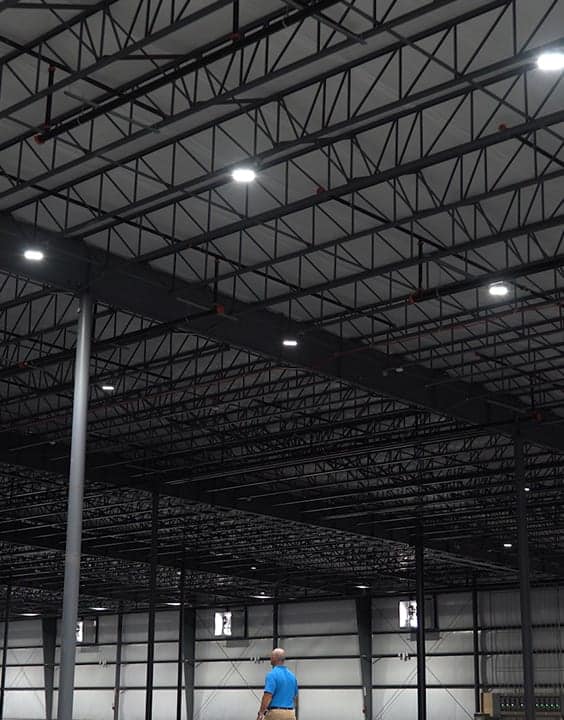LED Lighting Can Reduce Energy Consumption
LED lighting solutions can drastically reduce energy consumption. LED lights typically require 50-60% less energy than fluorescent tubes or incandescent bulbs.
Our teams of experts will assess your business’ energy needs to identify an LED lighting solution that best suits your goals and budget. We partner with you from start to finish, removing stress and confusion from the process.
Get Started with LED Lighting
How LED Lighting Can Reduce Energy Consumption:
Efficiency
Some LED light bulbs consume up to 70% less energy than an incandescent, fluorescent or halogen light bulb! LED light bulbs convert 80% of the much-reduced energy into light and only 20% into heat while incandescent, fluorescent and halogen bulbs convert 80% of their energy to heat and only 20% to light!
Durability
LED technology uses a semiconductor to generate electric light instead of incandescent technology, which uses a filament. Incandescent light bulbs generate a lot of heat, while LED light bulbs do not. This means LED bulbs and systems are cool to the touch and more durable than their incandescent counterparts. LED bulbs are also shock-resistant thanks to their epoxy resin housing.
Longevity
Today, many LED lights can perform at greater than 70% of incandescent, fluorescent, or halogen lighting output for up to 250,000 hours. That translates to 28.5 years if the light is on 24 hours a day, or 85.6 years if it’s left on for eight hours a day!
By comparison, a typical metal halide lamp will last only 2.5 years burning 24 hours a day. That’s only 41 for incandescent lamps and 291 days for fluorescent lamps under 24 hours per day of operation!
LED longevity means reduced replacement and maintenance costs.
The Helios Energy™ Standard
Our initial analysis of your facility, as well as a preliminary project design recommendation, comes standard in our free evaluation.
Contact UsThe Benefits of LED Lighting
Reduce Consumption
LED lights typically require 50%-60% less energy than a fluorescent bulb or incandescent tube. Additionally, the bulbs produce more light while lowering your facility’s energy consumption levels.

Improve Lighting Efficiency
LED replacement lights typically emit more light per watt of power consumed. That means investing in LED lights for your business is a great way to create energy-efficient lighting for your commercial facility.
Reduce Maintenance Costs
Some LED tubes do not require an external ballast and last 10x longer than fluorescent tubes, greatly reducing time-intensive maintenance. More importantly, LED replacement is needed less frequently, meaning fewer interruptions to business operations.
Extreme Cold and Heat Effectiveness
LED tubes are unaffected by extreme temperatures, unlike fluorescent and incandescent light bulbs, which might produce little or no light if too hot or cold. This makes LED lighting the safest and most practical choice for cold and hot environments!
Increase Productivity
Improving lumens—the amount of visible light—and eliminating flickering lights has been proven to increase productivity by up to 20% in working environments!
Instant Lighting and Frequency/Motion Switching
LED lights require no warm-up period. This means they instantly switch on at their maximum efficiency with no added degradation to their lifespan, which is usually associated with frequently turning lights on and off. This makes LED light fixtures ideal for areas needing motion sensor lighting or frequent illumination.
Reduce On the Job Inquiries
Studies show that increasing light quality and brightness can reduce workplace injuries by up to 50%. LED installations provide increased amounts of light with better quality to keep your employees safe as they work.
Increase Quality
Reducing energy production waste, easing eye strain, and providing a well-lit environment are associated with up to 15% gain in workplace quality of life.

Improve Employee Morale
Employees report increased job satisfaction and working conditions with improved lighting!
Decrease HVAC Costs
Traditional lighting converts 80% of power into heat while LED lighting converts 20% of consumed power into heat. Therefore, converting to LED results in measurable reductions in HVAC maintenance and operating costs!
